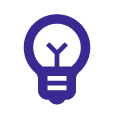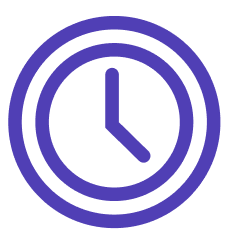Z-SCORE Neurofeedback
In Z-Score Neurofeedback, an individual’s brainwave activity is continuously compared to a large, age-matched normative database. Each brainwave measurement is converted into a z-score, which indicates how far it deviates from the statistical average (in standard deviations). During training, feedback is provided when the brain’s activity moves toward the optimal range (closer to a z-score of zero). This real-time reinforcement helps the brain learn to self-regulate, improving efficiency and flexibility. Z-Score Neurofeedback can target multiple sites and frequency bands simultaneously, allowing for more comprehensive training than traditional single EEG protocols. Because it is grounded in individualized qEEG assessment, it offers a highly tailored approach, making it a valuable tool for optimizing brain performance and supporting various cognitive, emotional, and behavioural goals.


Reasons to Consider
Neurofeedback
You may want to consider Neurofeedback Training if you are struggling with symptoms of inattention and lack of focus, anxiousness, depressed mood, issues with memory and brain fog, stress and burnout, and trouble sleeping Neurofeedback may be right for you.
Understanding Z-Score Neurofeedback Therapy
Z-Score Neurofeedback trains multiple areas of the brain at the same time. Also, Z-score Neurofeedback compares your brain to other people your age and gender to guide the process. It is a way to train the brain to be more relaxed, calm, alert, and focused. Sensors are placed on the scalp and they record brainwave activity. This information is transferred to the computer. When the software recognizes the client becoming more relaxed, calm, alert, and focused, the software plays video and sound. As soon as the client loses focus or becomes anxious, the video and sound stop playing. The client practices how to be more focused, calm and relaxed during the sessions.
A healthy brain is one that is flexible and dynamic. When it needs to accomplish a task, a healthy brain can recruit resources from other areas or networks in the brain, accomplish the task, and release those resources. Sometimes the brain struggles to recruit resources and other times the brain has a tough timing relaxing after a task. When this happens, symptoms may develop leaving brain function and efficiency potentially compromised.
Complex symptoms require a more complex brain assessment called a Quantitative Electroencephalogram (QEEG) assessment, or brain mapping. With the use of 19 electrodes placed on the scalp, we can look at the brain’s electrical activity in three dimensions. This assessment allows for an in-depth, objective understanding of what is going on in the brain and helps to guide neurofeedback training. Electrical activity across the brain is recorded, analyzed, and compared to age-normed (averages based on age) databases. This information is used to evaluate brain function, performance, understand where client’s symptoms may be coming from, and how to make an optimal change. We need to define what is considered “optimal” and train the brain towards that. This is where Z-scores come in. Connect with Neuropotential Clinics for Brain Training in Toronto, North York, and the GTA.
Benefits of Neurofeedback:
A DIFFERENT APPROACH
What if therapy and medication are not making a difference? This is where Neurofeedback can shine. Neurofeedback is able to look at the brain holistically by recording, analyzing, and creating personalized training programs based on your brainwave patterns to improve your quality of life.
SAFE AND NON-INVASIVE
Our equipment is able to record your brainwave activity in real-time, in a safe and non-invasive manner. This information is transferred to the computer where it is analyzed by complex, state-of-the-art software which provides feedback to the client in a safe and non-invasive way.
SIDE EFFECT FREE SUPPORT
Medication may work at the start, but as your body gets used to it you may have to increase dosages or switch medications. The side-effects of one drug may need to be supported by another (e.g ADHD medications may cause anxiousness, so you may need to start a round of antianxiety medication which may have its own set of side-effects). Neurofeedback is a great option for those uncertain about trying medication and their possible side-effects.
LONG-LASTING RESULTS
The brain has the innate ability to rewire and change itself when presented with learning opportunities. This principle is known as Neuroplasticity. Once sufficient learning is done, the brain can find a more optimal way of functioning and these results are generally long-lasting.
Neuroplasticity
Neuroplasticity is the idea that the brain can change and rewire itself based on learning opportunities. Neurofeedback is a learning opportunity for the brain to guide it towards optimal functioning.
Operant Conditioning
Operant Conditioning is the idea that if you reward the behaviour you want to see you increase the frequency of that behaviour occurring. Neurofeedback rewards healthy and optimal brainwave activity and increases the frequency of this behaviour occurring.
Self-Regulation
Self-regulation is the ability to adjust our thinking, attention, emotions, behaviour, and bodies so we can be in a calm, focused, alert state when learning and responding to our environment. Neurofeedback gives us the opportunity to practice to enter, recognize, and maintain a desired mental state.
Advantage of Working with Neuropotential Clinics
Board Certification:
Usually in a Neurofeedback Clinic, the Doctoral Level Clinician is Board Certified in Neurofeedback (BCN Accreditation) and he/she trains their staff to uphold the standards from the Board Certification International Alliance (BCIA). Not only is Dr. Muller Board Certified in Neurofeedback, both Directors are Neuropotential Clinics are Board Certified in Neurofeedback.
Research Experience:
Our Clinical Director is a published author in Neurofeedback Research. Shane Dutt was the first author of the featured Article LORETA Neurofeedback Combined with Biofeedback as a Treatment for Agenesis of the Corpus Callosum: A Single Case Study which was published in Biofeedback journal in 2016. This additional experience is crucial in ensuring you are getting the best Neurofeedback plan possible.
Technology and Software:
Neurofeedback is a very technical intervention that requires state-of-the-art hardware and software to ensure you are getting the most value from the experience. Most clinics use a wet-cap system that requires gel and paste to be applied at 19 different sites on the scalp. This can be uncomfortable for some and you have to go home to take a shower after your session. At Neuropotential Clinics, we have invested in wireless, dry-electrode systems that do not require any gel or paste to set up and execute your treatment plan. Our clients say the convenience and comfort really helps them get more out of their sessions with less frustration.
Google Reviews:
Most regulatory colleges do not allow for testimonials as there is no way to verify if they are authentic. Google Reviews allows clients to post on a third party website to ensure each opinion is trusted and true. We are proud to say Neuropotential Clinics is one of the highest rated clinics in Canada.
Training Time Per Session:
To ensure you are getting the most out of your sessions, the amount of training time you get per session is crucial. Wet-electrode systems can take between 15 to 20 minutes to set up, which only allows for 15-20 to minutes of training, followed by a 5 to 10 minute procedure to remove gel and paste from your scalp before you leave.
With our Dry-Electrode systems we can reduce set up time to 5 to 7 minutes, allowing for 35-40 minutes for training, and a 10-second clean up process for the client. That is almost double the training than a wet-cap system for a 50 minute session. This reduction in setup and clean up time allows you to get more training down within the hour while still maintaining safety standards.

How do we measure progress?
Updated QEEG assessment recordings allow us to map and monitor changes that are occurring as sessions progress, but we also rely upon subjective reporting from our clients. We look at symptom severity (how extreme or severe), frequency (how often, how many times per day), and duration (how long do these symptoms last) and their effect on quality of life.
How Do I Get Started?

Clinical Intake Interview
We start off with a Clinical Intake Interview. This is where we review background, medical, and developmental history, your symptoms and their severity, major life events and do our best to conceptualize the uniqueness of your case.

qEEG Brain Mapping Assessment
The next step is a Quantitative Electroencephalogram(QEEG) baseline recording. Just as a stethoscope is placed on your chest to listen to your heartbeat, electrodes are placed on your scalp to record your brainwave activity.

Custom Program Creation
Using the information from your clinical intake interview, baseline recording, and intake package we put the pieces together to create a tailored program to suit your needs.

Debrief/Feedback Session
Finally, we debrief the results, help you understand the different statistics and brainwave patterns involved in your program, as well as help answer your questions before you can begin training.
Frequently Asked Questions
See some common questions and answers below, or call us at (416) 398-9991.




